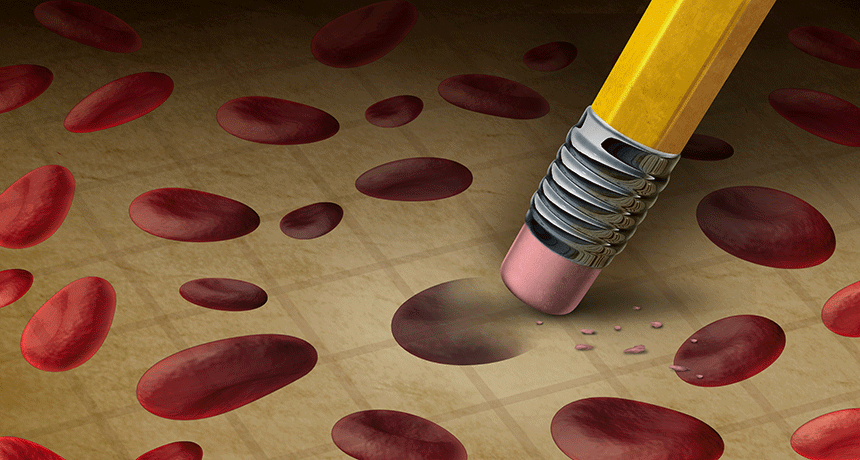
There’s a fairly simple alphabet that spells out the directions for what genes want the body’s cells to do.
But sometimes there’s a mistake — essentially a typo — in those directions. Now, working somewhat like a pencil, new tools can edit the body’s genes one letter at a time. They can fix about half of the simple typos that cause human diseases.The new tools are based on a technology called CRISPR/Cas9. It’s like a set of molecular scissors that snips DNA. Scientists can guide the scissors to the exact spot in an organism’s genetic instruction book where they want to cut something out. They’ve used the tool to make faulty genes — mutations — or correct them. And they’ve done this in animals and in human cells.
Scientists also have ways to use CRISPR/Cas9 to change gene instructions without cutting DNA at all. These tools are called “base editors.” A DNA base is a molecule represented by a single letter in the body’s genetic code. There are four DNA bases, known as A, C, T and G.
Base editors can fix one-letter typos in the genetic code. So far, they’ve only been able to fix one type of error: They’ve turned C’s into T’s.
Using these tools, scientists have changed genes in plants, fish, mice — even in human embryos.
Editing DNA in this way may be safer than cutting it, says Gene Yeo. He’s a biologist at the University of California, San Diego.
“We know there are drawbacks to cutting DNA,” he says. After CRISPR breaks DNA, a cell’s own machinery pastes it back together. But mistakes often occur during this process. And CRISPR sometimes makes extra DNA cuts at places similar to the target. That means it can create new mutations by accident. Such “permanent irreversible edits at the wrong place in the DNA could be bad,” Yeo says.Two papers now describe different ways to solve that problem.
David Liu and colleagues tweaked the CRISPR/Cas9 gene editor so that it turns the DNA base adenine (A) into guanine (G). They shared their work October 25 in Nature.
In a second study, Feng Zhang and colleagues redesiged a gene editor called CRISPR/Cas13 to correct the same typos in RNA. RNA is a molecule similar to DNA. RNA carries messages inside cells. This study was also published October 25, but in the journal Science.
The new tools expand the toolkit scientists have for correcting diseases. Now researchers can rewrite all four letters in the genetic code.
Repairing rungs
DNA has two strands that give it the shaped of a long, twisted ladder. Bases on one side of the ladder always pair up with certain bases on the opposite side. The molecule adenine (A) always pairs with thymine (T). Guanine (G) always pairs with cytosine (C). These base pairs form the ladder’s…
The post New tools can fix genes one letter at a time appeared first on FeedBox.